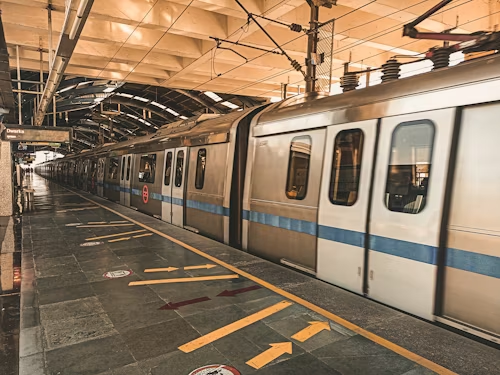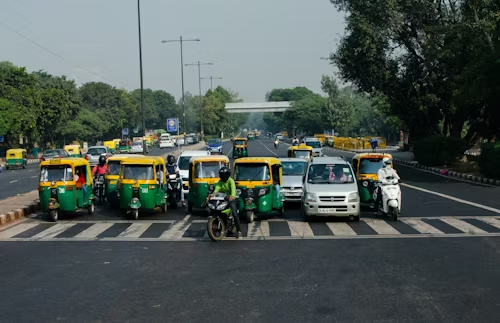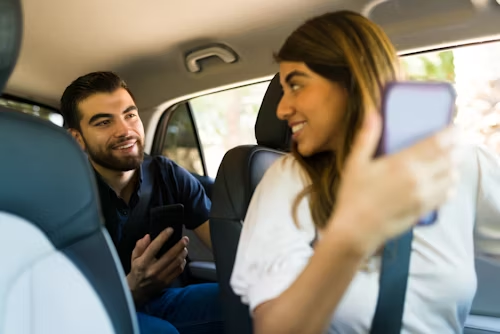Navigating Delhi’s Chaos: A Traveler’s Tale of Getting Around the Capital
I stepped off the plane at Indira Gandhi International Airport, my backpack heavy with anticipation. Delhi, a city of 33 million souls, pulsed with life outside the terminal. The air was thick with heat and the promise of adventure. But how would I navigate this sprawling, chaotic metropolis? My first trip to India’s capital taught me one thing: getting around Delhi is a story in itself, a blend of modern marvels and old-school grit. Here’s how I mastered the Delhi Metro, haggled with auto-rickshaw drivers, rode with apps, wandered on foot, and stayed safe—lessons I’m sharing so you can explore Delhi like a pro.
Why Most Transportation Advice Fails Travelers
Most guides tell you to “take the Metro” or “book an Uber” without capturing the real Delhi experience. They miss the sensory overload—the honks, the haggling, the vibrant chaos of narrow lanes. Delhi’s transport isn’t just about getting from A to B; it’s about immersing yourself in the city’s rhythm. I learned this the hard way, fumbling through crowded stations and dodging overzealous drivers. But with the right approach, every mode of transport—Metro, rickshaws, taxis, apps, or your own two feet—becomes a gateway to Delhi’s soul. Let me walk you through five ways to navigate this city, each a chapter in my own journey.
1. Riding the Delhi Metro: The City’s Beating Heart
My First Metro Ride
My first morning in Delhi, I stood at the entrance of the New Delhi Metro Station, clutching a map. The Delhi Metro, spanning over 390 kilometers, is the city’s lifeline, connecting Old Delhi to modern Gurgaon. I bought a Smart Card for 50 rupees (70 cents) and felt like I’d unlocked a secret.

Why It Works
The Metro is fast, air-conditioned, and affordable. Fares range from 10 to 60 rupees (13–80 cents), with trains running every 2–3 minutes during peak hours. Women-only carriages, marked by pink signs, offer a safe space for female travelers. I zipped from Connaught Place to Chandni Chowk in 15 minutes, avoiding the traffic snarl above.
How to Master It
- Get a Smart Card: Skip ticket lines and save 10% on fares. Recharge at any station.
- Download the Metro App: Maps and schedules make planning a breeze.
- Avoid Peak Hours: Mornings (8–10 AM) and evenings (5–7 PM) are packed.
- Follow the Footprints: Color-coded signs guide you through transfers at busy stations like Rajiv Chowk.
The Metro became my anchor, a reliable way to cover long distances without breaking the bank.
2. Auto-Rickshaws and Taxis: Embracing the Hustle
The Rickshaw Rumble
In Chandni Chowk, I hailed a green-and-yellow auto-rickshaw, its driver grinning as we haggled. “100 rupees!” he shouted. I countered with 60, and we settled at 80. The open-sided, three-wheeled vehicle weaved through traffic, the breeze carrying scents of street food. It was exhilarating.

Why They’re Essential
Auto-rickshaws are perfect for short trips or areas the Metro doesn’t reach, like narrow market lanes. Fares start at 25 rupees for 1.5 km, then 9–12 rupees per km. Taxis, like the black-and-yellow ambassadors, cost more (15 rupees for the first km, 8.50 per km after). Both are everywhere, but drivers often skip meters, so bargaining is key.
How to Navigate Them
- Insist on the Meter: If they refuse, negotiate upfront. Use Google Maps’ auto-rickshaw fare estimator for leverage.
- Walk Away from Tourist Traps: Drivers near attractions like Red Fort charge double. Step a block away for better rates.
- Carry Small Change: Drivers rarely have change for large bills.
- Know the Helpline: For overcharging or refusal, call Delhi Traffic Police at 011-23010101 or text 56767 with the driver’s registration number.
My rickshaw rides were a crash course in Delhi’s street smarts, turning every trip into a negotiation dance.
3. Ride-Sharing Apps: Convenience Meets Comfort
My Uber Epiphany
After a long day at Humayun’s Tomb, I was too tired to haggle. I opened the Uber app, entered my destination, and a car arrived in minutes. No bargaining, no detours—just a smooth ride to my hotel for 150 rupees. Apps like Uber, Ola, and Rapido have transformed Delhi’s transport scene.

Why They Shine
Ride-sharing apps offer transparency and safety. Fares are calculated upfront (Uber starts at 60 rupees plus 6 per km), and GPS tracking ensures drivers stick to the route. Options range from budget autos to premium cabs. For women, services like SHERYDS, a female-only bike taxi, provide extra security.
How to Use Them
- Download Apps Early: Uber, Ola, or Rapido need an Indian number, so set up at the airport.
- Check Surge Pricing: Fares spike during rush hours or rain. Compare apps for the best deal.
- Use Safety Features: Share your ride details and use the emergency button if needed.
- Opt for SHERYDS: Women can book female-driven bike taxis at 12 Metro stations for 10 rupees per km.
Apps became my go-to for late-night rides or when I craved air-conditioned comfort.
4. Walking Tours: Delhi’s Soul on Foot
Wandering Old Delhi
One evening, I joined a walking tour in Old Delhi. Our guide, a former street kid from Street Connections, led us through Chandni Chowk’s alleys. We dodged rickshaws, savored parathas, and explored hidden havelis. It was Delhi at its rawest, most vibrant.
Why Walking Works
Delhi’s historic core—Old Delhi, Lutyen’s Delhi, Hauz Khas—is best explored on foot. Areas like India Gate to Rajpath or Jama Masjid to Red Fort are walkable and rich with history. Guided tours add context and support local communities.
How to Walk Smart
- Join a Guided Tour: Groups like Street Connections offer safe, insightful walks.
- Stick to Safe Areas: Connaught Place, Lodhi Garden, or Hauz Khas Village are pedestrian-friendly.
- Wear Comfortable Shoes: Uneven pavements demand sturdy footwear.
- Stay Alert: Watch for traffic, especially at busy intersections.
Walking let me feel Delhi’s pulse, from its chaotic markets to serene monuments.
5. Safety Tips: Staying Savvy in the Chaos
My Close Call
On my second day, a taxi driver at the airport quoted 6,500 rupees for a 10-mile ride. I smelled a scam and walked to the prepaid taxi booth instead, paying 300 rupees. Delhi’s transport is safe if you’re prepared, but naivety invites trouble.
Why Safety Matters
Delhi’s bustle can overwhelm, and scams or rash drivers are real risks. Staying informed keeps you in control, whether you’re a solo traveler or with family.
How to Stay Safe
- Use Prepaid Booths: At airports and stations, book taxis through official counters to avoid scams.
- Women’s Options: Use women-only Metro carriages or SHERYDS bike taxis for added safety.
- Avoid Night Autos: Open-sided rickshaws are risky after dark; opt for app-based cabs.
- Trust Your Instincts: If a driver seems off, note their registration and report to 011-23010101.
These tips turned potential pitfalls into confidence, letting me focus on Delhi’s magic.
The Journey Continues
My final day in Delhi, I stood at India Gate, the sun setting over Rajpath. I’d ridden the Metro’s sleek trains, haggled with rickshaw drivers, booked Ubers, and wandered ancient lanes. Each mode of transport revealed a new layer of the city—its energy, its history, its heart. Whether you’re chasing monuments or markets, Delhi’s transport options are your ticket to adventure. So, grab a Metro card, download Ola, and step into the chaos. What’s your next stop?